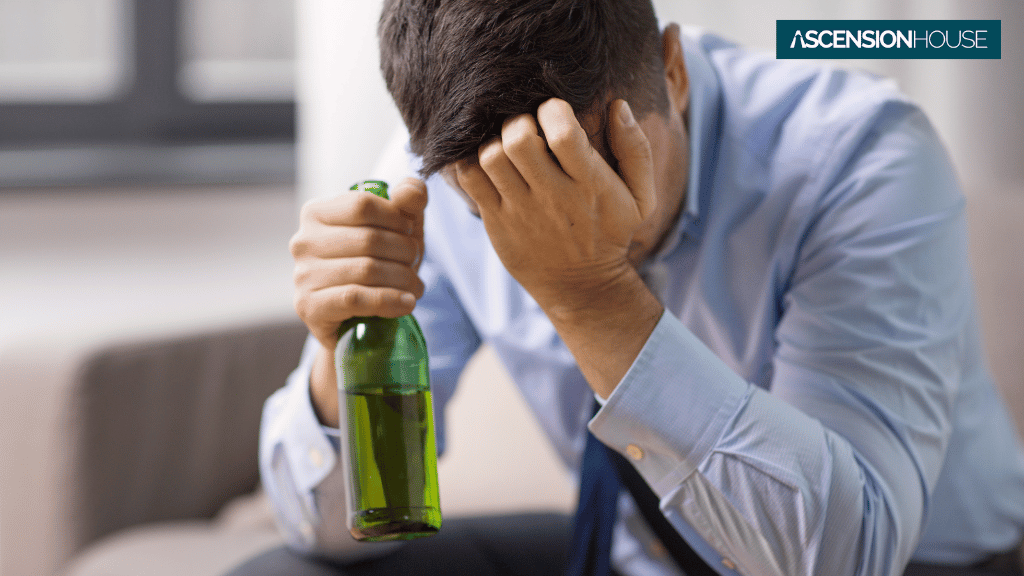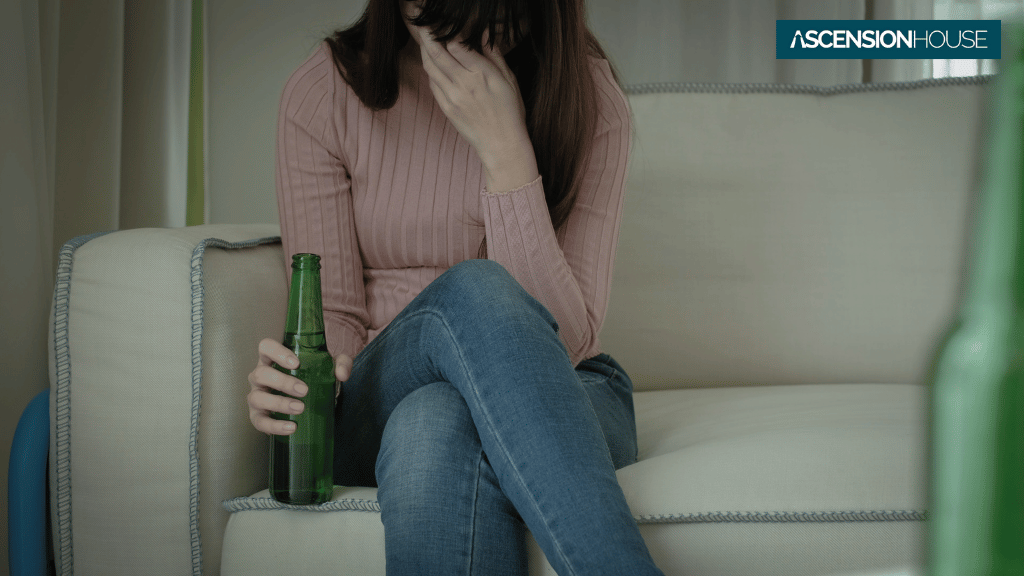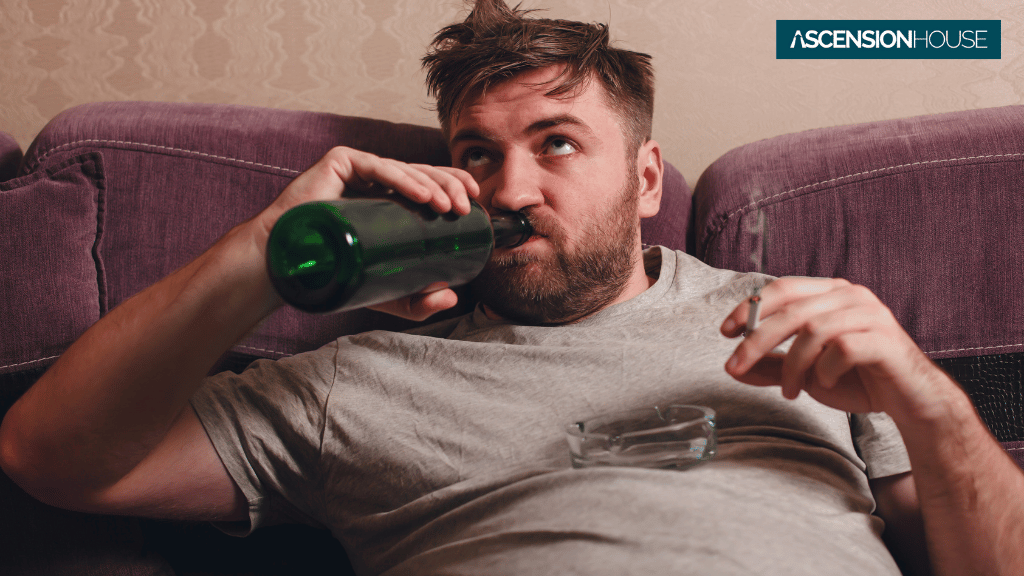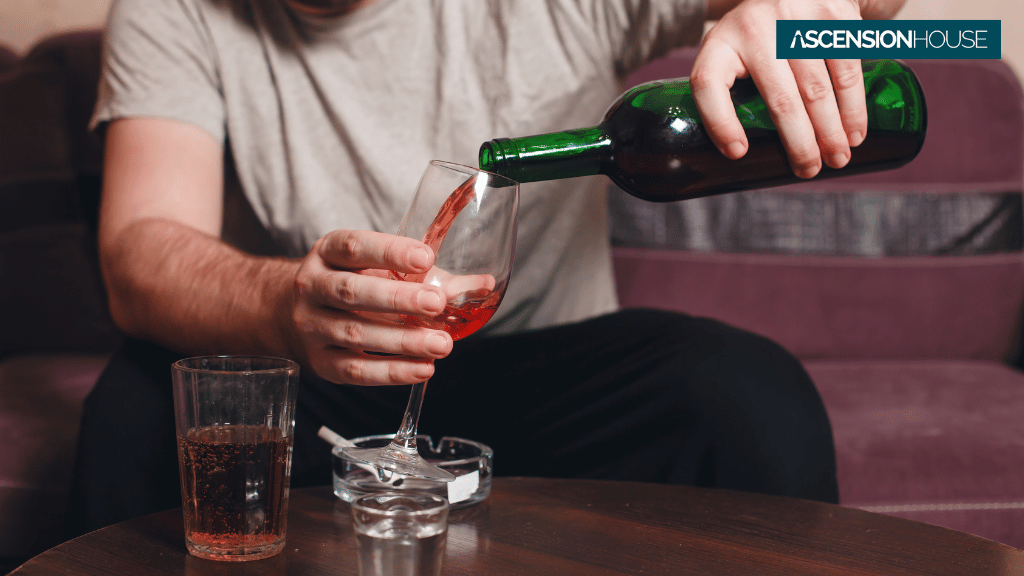Alcoholism and alcohol use disorder take on many forms. Sometimes, the stereotypes just aren’t true. For example, you may never have been homeless or had to steal money to get alcohol. You might have a family and a good job, so you can’t be suffering from alcohol addiction, right?!
Alcohol use disorder and alcoholism can come from a few drinks with friends if you do so constantly. Are you an alcoholic? This article will help you understand what it means and how to get help if you do suffer from the disease.
Understanding the signs and thresholds that define alcoholism—when does it cross the line? #Alcoholism #Awareness #HealthAndWellness https://t.co/gAHqvnITY6 pic.twitter.com/sfe7AXhyy7
— Ascension House – Sober Living Austin (@AscensionSober) November 30, 2023
What Does Alcoholic Mean?
An alcoholic is a person who cannot control or stop drinking alcohol voluntarily. Usually, they are often intoxicated, drink every day, and must have more quantities of alcohol than other people to get “drunk.”
Alcoholics Anonymous has defined alcohol addiction as a physical compulsion and a mental obsession to drink alcohol. The cravings are catered to anytime, even when they shouldn’t be.
What Causes Alcohol Addiction?
There’s no clear cause of alcoholism yet. However, alcohol use disorder (AUD) is defined as something happening when someone drinks so often or so much that it changes their brain’s chemical makeup. Alternatively, alcoholism is deemed as an addiction, and there’s no single reason for it.
Overall, your dopamine levels are raised when consuming alcohol, similar to using illegal drugs. The brain thinks of it as a reward and wants it more often. Therefore, people will start to crave it and be more susceptible to alcoholism. This depends on various factors, including psychological, genetic, and environmental factors.
Is There a Difference Between Alcohol Abuse and Casual Drinking?
Casual drinking means having a glass of wine at dinner or a few drinks with friends periodically. However, it can turn into alcohol abuse and alcoholism quickly.
People often use “alcoholism” and “alcohol abuse” interchangeably. However, alcoholism is another word for alcohol addiction/dependence. The person has a psychological or physical compulsion to drink alcohol. Alternatively, alcohol abuse is a pattern of behaviors whereby the person drinks heavily even though they know of the negative consequences.
Negative Consequences of Alcohol Use Disorder
Alcohol misuse impacts a person’s life in many ways. The Substance Abuse and Mental Health Services Administration claimed that there were over 14,000 people 12 or older who suffered from alcohol use disorder in 2017 and 2018. The numbers for those 18 to 25 in the same years were almost 3,500.
Overall, alcohol use disorder can affect your life in many ways. Roughly 38 percent of people report having depression, while high blood pressure was present in 31 percent of people. Likewise, liver disease, cardiovascular disease, and cirrhosis were all potential issues. The best course of action is to stop drinking now to reduce the health problems you’ll face later in life.
What’s Excessive Drinking?
There are two types of excessive drinking:
Binge Drinking
Binge drinking means consuming large amounts of alcohol at any given time. This means your blood alcohol concentration goes to 0.08 percent or higher. Men often suffer from binge drinking if they have five or more drinks in two hours, and women will get to that point with four or more drinks within that same time frame.
Heavy Drinking
Heavy drinking in men under 65 years old means having two drinks daily or over 14 drinks per week. For anyone over 65 years old, it means having over one drink daily or more than seven drinks per week.



Warning Signs That You Might Have an Alcohol Use Disorder
Do you suffer from alcohol addiction? Here are the warning signs that can help you answer that question.
- You drink alone or in secret.
- You have alcohol cravings.
- You have lost interest in the activities you used to enjoy.
- You cannot control how much alcohol you consume or stop drinking.
- You continue to drink even though you have family, financial, or health problems.
- You must have a drink when you wake up.
- You have guilty feelings because of your drinking.
- You suffer from irritability and mood swings.
- You’re suffering from withdrawal symptoms.
- You make drinking your priority over other responsibilities.
Regardless of who is struggling with alcohol addiction, it’s crucial to understand the signs. You aren’t alone because thousands of people in America deal with alcoholism. It’s possible to get help!
Types of Alcoholics
Most people think of the stereotypical alcoholic, so they don’t believe they have a problem. However, those suffering from alcohol addiction come from any age and background. Here are the alcoholic types:
Young Antisocial Subtype
About 54 percent in this group have an antisocial personality disorder, which means they suffer from three or more of the following:
- Irresponsibility
- Deceitfulness
- Impulsiveness
- Lack of remorse
- Lack of regard for other people’s safety
- Regular assaults or fights
- Recurring criminal activities
Most people in this group also suffer from major depression, bipolar disorder, anxiety, and other substance addictions.
Young Adult Subtype
People in this group make up 31 percent of those addicted to alcohol in America. They might drink less frequently, but they’ll binge and overdo it when they partake.
Chronic Severe Subtype
This is a rare group. Many people in this subtype started drinking early in life and are now middle-aged. They typically abuse other substances and have other disorders.
Intermediate Familial Subtype
People in this group are about 38 years old and employed. They come from multigenerational alcoholics and have often dealt with clinical depression.
Functional Subtype
Functional alcoholics are the furthest from the normal stereotype, so they’re in denial about their problems. They typically have stable jobs, healthy families, and are successful. In 26 percent of the cases, they have college degrees and work full time.

Alcohol Withdrawal Symptoms and Signs of Alcohol Abuse and Alcoholism
Alcoholism means that you are physically or mentally dependent on alcohol. You might try to cut back on your drinking but don’t succeed, or you’re often thinking about when you’ll have the next drink. In this case, you may be addicted.
Overall, alcoholism starts with dependence. It’s considered a drug, so the more you drink, the more your body will adjust to the effects and learn to compensate for them. Eventually, the dependence develops, so it’s hard to stop drinking. When you do, you suffer from withdrawal symptoms, such as:
- Inability to think clearly
- Nightmares
- Mood swings
- Shakiness and jumpiness
- Irritability
- Fatigue
- Depression
- Nervousness or anxiety
Depending on how long you’ve been drinking, it can take hours or days for the symptoms to show up. Then, they can get worse. Usually, drinking more can alleviate withdrawal symptoms, which is why people will stop for a few days and go right back to consuming alcohol.
Delirium tremens is possible, and this is a very severe form of withdrawal. It can lead to seizures, confusion, hallucinations, fever, and agitation. Therefore, if you’ve been drinking heavily for a while and want to stop your addiction, you will likely need medical assistance (medical detox).
Can Alcohol Use Disorder Be Reversed?
Alcoholism is considered a disease that affects adults and children. However, the effects are different for everyone. Some people can get intoxicated by one drink, but others will need more to “get drunk.”
The National Institute on Alcohol Abuse and Alcoholism claims that one drink is:
- 1.5 oz. of distilled spirits
- 5 oz. of wine
- 12 oz. of beer
Generally, excessive alcohol use can cause various health issues because of the effects the beverages have on the brain and body.
Though there is significant harm associated with drinking alcohol, it is possible to reverse the effects in most cases. However, it’s crucial to identify problematic alcohol consumption early on and get treatment to review the physical, emotional, and mental side effects of your heavy drinking habits.
You should also be aware that, at a certain point, the damage will simply be too severe. For example, permanent complications from heavy drinking include cirrhosis and liver failure. Still, permanent health damage shouldn’t deter you from getting treatment since it could still improve your quality of life.

Where to Find Help for Your Drinking Problem
Learning that you’re not a casual drinker and might have an alcohol use disorder or alcohol addiction can be a shock to your system. It will take time for you to process it all, but you shouldn’t do it alone. Talk to your family members and friends about treatment. Once you’ve gone through the detoxification process, you may want to consider staying at a halfway house.
Ascension House is situated in Downtown Austin, Texas. It offers high-structure recovery options to help you stay on track. Please call 512-598-5030 or use the online contact form for questions and availability.
FAQs
Typically, alcoholics will drink excessively, so they have more than three drinks each day and can’t control their intake. The NIAAA (National Institute on Alcohol Abuse and Alcoholism) claims that excessive drinking is a huge problem for millions of Americans.
The three primary types of alcoholics include:
– Functional
– Young adult
– Chronic severe
According to the National Institute on Alcohol Abuse and Alcoholism, alcoholic beverages are drinks that feature ethanol, which is one type of alcohol that’s similar to a drug. It’s produced through the fermentation of fruits, grains, and other sugar sources.
Heavy drinking is defined by how much alcohol you consume in a day or week. For males under 65 years old, it means two drinks per day or over 14 drinks in one week. For anyone over 65, it’s considered more than a drink per day or over seven drinks in one week.
Book a Free Assessment
Contact us to schedule a free addiction or mental health assessment as part of our admissions process.
 11700 Bittern Hollow Dr., Austin TX 78758
11700 Bittern Hollow Dr., Austin TX 78758 (512) 598-5030
(512) 598-5030






